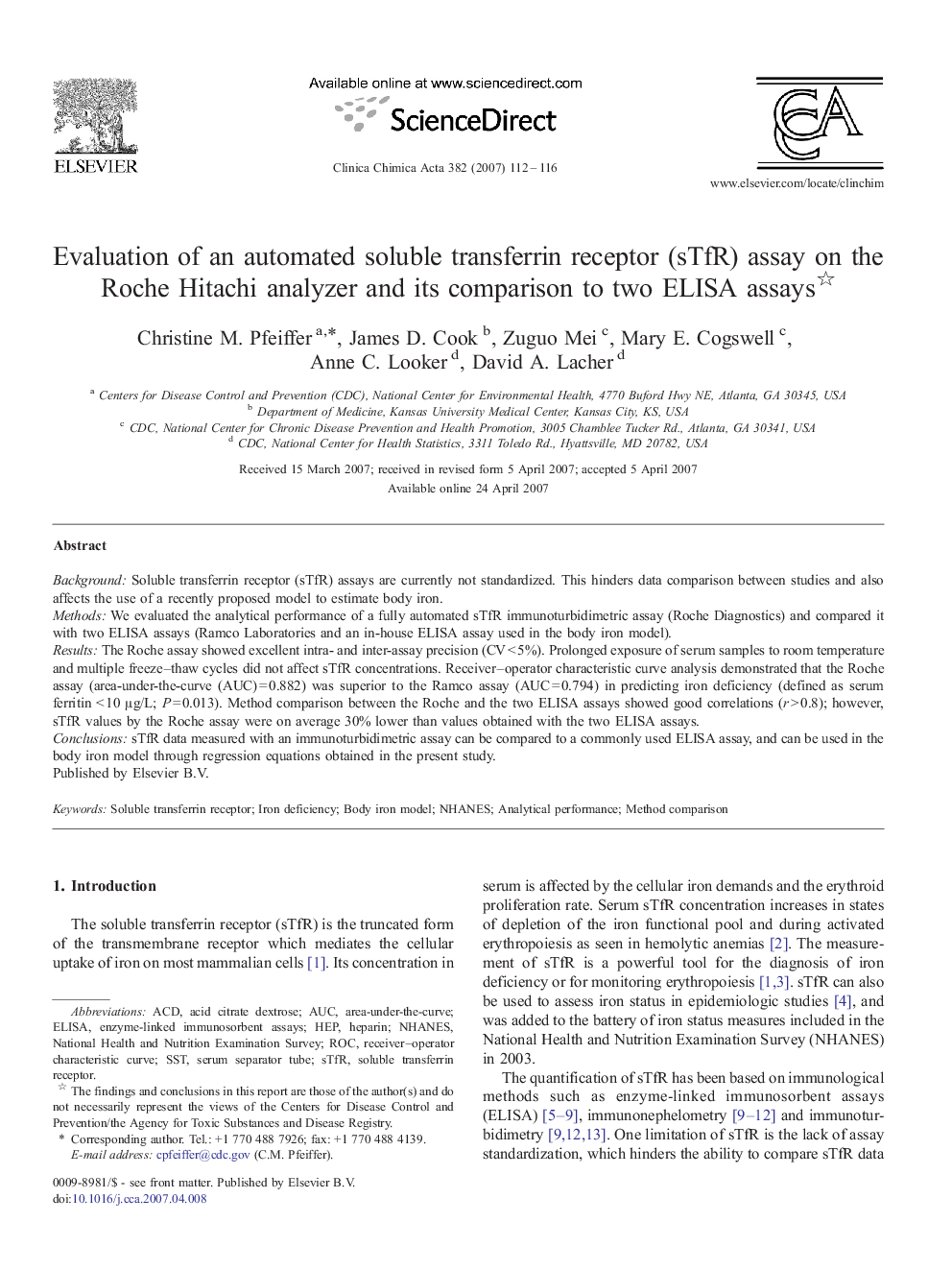| Article ID | Journal | Published Year | Pages | File Type |
|---|---|---|---|---|
| 1967594 | Clinica Chimica Acta | 2007 | 5 Pages |
BackgroundSoluble transferrin receptor (sTfR) assays are currently not standardized. This hinders data comparison between studies and also affects the use of a recently proposed model to estimate body iron.MethodsWe evaluated the analytical performance of a fully automated sTfR immunoturbidimetric assay (Roche Diagnostics) and compared it with two ELISA assays (Ramco Laboratories and an in-house ELISA assay used in the body iron model).ResultsThe Roche assay showed excellent intra- and inter-assay precision (CV < 5%). Prolonged exposure of serum samples to room temperature and multiple freeze–thaw cycles did not affect sTfR concentrations. Receiver–operator characteristic curve analysis demonstrated that the Roche assay (area-under-the-curve (AUC) = 0.882) was superior to the Ramco assay (AUC = 0.794) in predicting iron deficiency (defined as serum ferritin < 10 μg/L; P = 0.013). Method comparison between the Roche and the two ELISA assays showed good correlations (r > 0.8); however, sTfR values by the Roche assay were on average 30% lower than values obtained with the two ELISA assays.ConclusionssTfR data measured with an immunoturbidimetric assay can be compared to a commonly used ELISA assay, and can be used in the body iron model through regression equations obtained in the present study.
